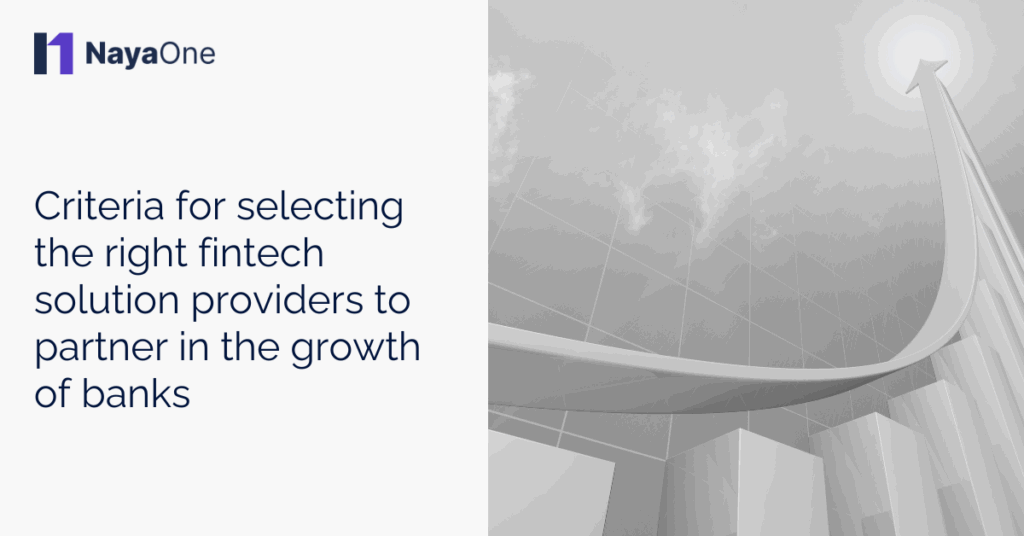Banks don’t just compete on interest rates and branch networks anymore. The battleground has shifted; now it’s about who can deliver smarter digital services, integrate new tools quickly, and adapt to customer behaviour with minimal lag. And that’s exactly where fintech solution providers come in.
They’re no longer seen as disruptive outsiders. In many cases, they’re the enablers of progress. Whether it’s launching new payment experiences, rolling out digital onboarding, or embedding advanced analytics, fintech partnerships allow banks to move at a different pace altogether.
But not every provider is a good match. With so many players in the space, from niche startups to scaled platforms, banks need a framework to assess which partnerships will actually support their long-term growth, rather than just tick a tech box. Let’s break down the key questions that can guide that decision.
What are the core capabilities that a fintech partner should offer?
Capability alignment is the first filter. It’s not just about what a fintech can do but how well those capabilities plug into the bank’s broader priorities.
If a bank is pushing for open banking functionality, for example, it makes sense to work with fintech solution providers that already have strong API infrastructures and regulatory readiness in that space. If digital identity is on the roadmap, then providers with proven biometric tools and KYC/AML layers should be on the shortlist.
Beyond the buzzwords, banks need to see how these capabilities have been deployed in other contexts. Ask: has this provider worked with similar institutions? Do they offer pre-built integrations or sandbox testing? Do their tools reduce friction for internal teams or customers?
Capability should also include support. A fintech might offer great tech, but if their integration support or documentation is weak, that’s going to slow things down. Banks should be looking at the whole stack, tech, service, and flexibility.
How important are regulatory alignment and security in a fintech partnership?
Extremely. It’s one thing to build a slick user experience; it’s another to do it while meeting regulatory obligations across multiple regions. Banks carry a heavier burden when it comes to compliance, and any fintech solution providers they partner with need to understand that landscape.
In fact, 80 per cent of sponsor banks report difficulty meeting compliance requirements in embedded finance partnerships, a clear reminder that screening for security and regulatory readiness isn’t optional
That means data residency, auditability, encryption standards, and clear controls for access and activity. For banks, trust in a fintech solution goes beyond the functionality; it’s also about whether they can demonstrate resilience and governance.
It’s also worth looking at certifications and third-party audits. While not the only indicators of maturity, they do signal a level of operational discipline that banks can rely on. And if a provider doesn’t have those in place yet, they should at least have a clear roadmap for getting there.
What cultural and operational fit should banks look for?
This part is often overlooked but makes a big difference once the partnership is underway. Banks should consider how well a provider’s ways of working match their own. Are they collaborative or prescriptive? Do they communicate clearly and regularly? Are they open to feedback and iteration?
A strong cultural fit doesn’t mean being identical; it means being able to work through complexity together. Especially when projects scale or hit roadblocks, shared expectations and transparency can make the difference between a frustrating vendor experience and a productive long-term relationship.
It also helps to work with fintech solution providers who understand the bank’s environment. Not just technically, but organisationally, they should appreciate the internal pressures and approval layers banks deal with. That empathy often translates into smoother onboarding and better outcomes.
How can banks assess a fintech provider’s track record and scalability?
Past performance might not guarantee future success, but it does provide context. Banks should dig into where and how a fintech’s solutions have been used. Real-world case studies are gold here, especially if they include measurable outcomes or lessons learnt.
Look at longevity too. A flashy pilot is one thing, but sustained delivery over time is far more meaningful. How often do they update the product? What’s the feedback loop with current clients? How do they handle versioning and backward compatibility?
Scalability is also key. If a provider’s tools work well in a 10-branch bank, will they still perform when rolled out to 300 branches with complex reporting lines? Can the provider support higher data volumes, user numbers, and more integrations without compromising performance?
These are not questions with yes/no answers; they require proper due diligence. Banks should be confident that their chosen fintech partners can grow with them, not become a bottleneck six months down the line.
What does a successful fintech partnership look like in practice?
It’s not just about ticking boxes. The most successful partnerships are the ones where both sides are committed to co-creating value. That means open dialogue, clear shared goals, and a willingness to adjust course when needed.
Banks that get this right don’t just gain a new vendor; they gain a partner who actively helps them shape their innovation strategy. They get to experiment safely, deploy faster, and deliver experiences their customers actually want.
That’s where a platform like NayaOne comes in. It gives banks a secure environment to explore, test, and validate financial technology solutions without committing to full-scale rollouts right away. Instead of relying on promises, banks can see how a solution performs in context, making every partnership decision a smarter one.
Ultimately, the right fintech solution providers are the ones who not only solve problems but also support momentum. When chosen carefully, these partnerships have the power to transform how banks grow and compete, not just for now, but for the long run.





